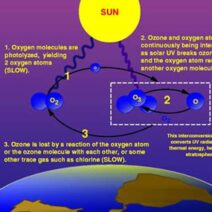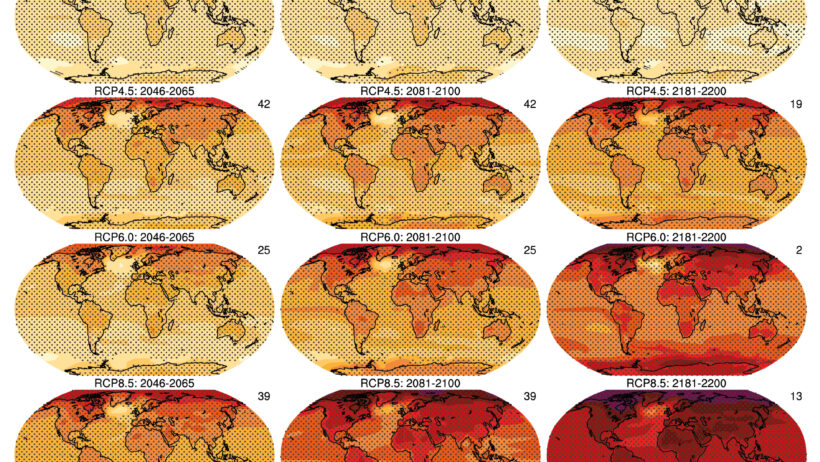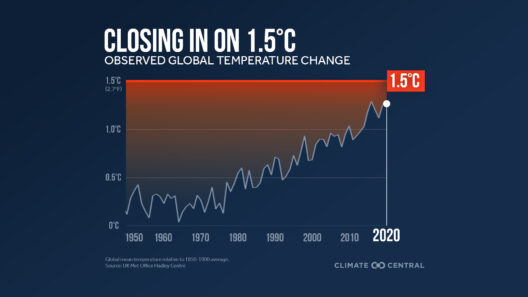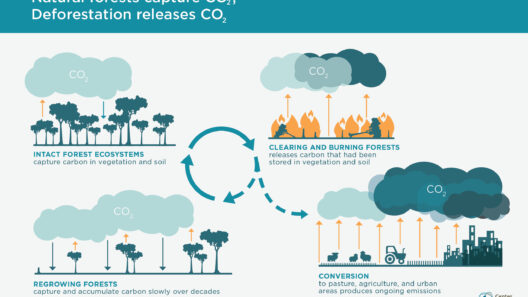In the vast theater of nature, climate change acts as an enigmatic performer, subtly shifting the stage upon which life unfurls its narrative. This transformation is not merely a specter of human activity but emerges from a confluence of complex scientific phenomena that beckon our attention. To comprehend how climate change initiates its insidious march, we must first unearth the foundational mechanisms driving this global upheaval.
At the heart of climate change lies the phenomenon of the greenhouse effect. Imagine Earth as a vibrant greenhouse, covered with a translucent shroud that captures the warmth of the sun. Solar radiation penetrates this atmospheric veil, warming the planet’s surface. However, like an overzealous gardener accumulating warmth beneath a glass roof, too much greenhouse gas can suffocate the vitality of this ecosystem. Key players in this intricate dance include carbon dioxide (CO2), methane (CH4), and nitrous oxide (N2O). Their exuberance in our atmosphere is a double-edged sword; while they are essential for maintaining life, excessive concentrations precipitate a climatic upheaval.
Carbon dioxide, primarily released from fossil fuel combustion, serves as one of the most significant influencers in this saga. Its rise in the atmosphere is akin to leaving a window ajar in our climate-controlled greenhouse—heat escapes less efficiently, leading to a gradual but irrevocable warming. The Industrial Revolution marked the inception of this excessive CO2 release, transforming landscapes and economies but also charting a new course for climate change. Thus begins the cascade of consequences that follow.
As the mercury rises, melting glacial ice represents the first act of this unfolding drama. Glaciers serve as Earth’s solid vestige of history, reflecting both climatic epochs and natural resilience. Their retreat signals a grim reality: polar regions, once bastions of stable climates, are now at the forefront of change. As these frozen giants dissolve, they contribute to rising sea levels, a flood of consequences ominously looming over coastal communities worldwide.
The repercussions extend beyond the melting ice caps; they echo through ecosystems and economies alike. Marine life, attuned to the nudges and rhythms of their environment, finds itself facing unprecedented alterations in temperature and salinity. Coral reefs, the rainforests of the ocean, are particularly vulnerable. They rely on a delicate symbiotic relationship with zooxanthellae, algae that provide nourishment and vibrancy. When sea temperatures rise, this relationship falters, leading to the phenomenon known as coral bleaching. The vivid colors of life diminish, leaving behind ghostly structures, a haunting reminder of what once thrived.
But climate change weaves a broader tapestry than the mere melting of glaciers or the bleaching of coral. It infiltrates the very fabric of weather patterns—an outcome as unpredictable as a dice throw. The once-stable climate equilibria are now cascading into extremes, rendering predictable patterns into chaotic aberrations. Drought, flooding, hurricanes, and heatwaves no longer discern between rich and poor; they transcend boundaries, leaving devastation in their wake.
La Niña and El Niño cycles, both natural phenomena with historical significance, find themselves exacerbated by this anthropogenic influence. As these climatic oscillations intensify, they provoke a turmoil of events that can disrupt agricultural cycles and threaten food security across continents. An empire built on grains may find itself destabilized by droughts in one region while facing floods in another. The global supply chains, once robust and intricate, confront vulnerability in the face of shifting weather.
Such disruptions ripple through economies, culminating in social unrest and migration crises. The landscape of human settlement is poised to morph as communities, once steadfast in their habitation, seek refuge from the relentless impacts of climate change. This migratory instinct is primal—a visceral response to survival, echoing the ancient movements of our ancestors seeking a more hospitable environment.
To navigate this multifarious crisis, it is pivotal to consider the feedback mechanisms that perpetuate climate change. For instance, the thawing of permafrost releases vast reserves of methane, a greenhouse gas with a potency far exceeding that of CO2. This self-reinforcing loop illustrates the precarious nature of our relationship with the climate; as threshold temperatures are breached, humanity’s hope for mitigation fades like a distant star.
As we ponder the pathways ahead, adaptation emerges as a clarion call for both nature and society. Resilience-building, through community engagement and informed policymaking, offers a potential counterbalance to the challenges at hand. Innovations in technology, such as carbon capture and renewable energy, present avenues toward mitigating our carbon footprint. Furthermore, sustainable agricultural practices and conservation efforts are crucial in tempering the impact of climate change, ensuring that nature’s vibrant voice is not drowned out by the din of industrialization.
In summation, the orchestra of climate change is a complex symphony, composed of natural phenomena and human influence intermingling in a delicate pas de deux. To fathom how climate change starts is to understand the broader narrative of our planet’s evolution and its consequential shifts. We stand at a pivotal juncture, with the power to rewrite this song, approaching it with vigilance and an unwavering commitment to stewardship. Embracing this duty is not merely an option; it is a collective imperative resonating through the ages—a clarion call, urging action before the curtain falls.





